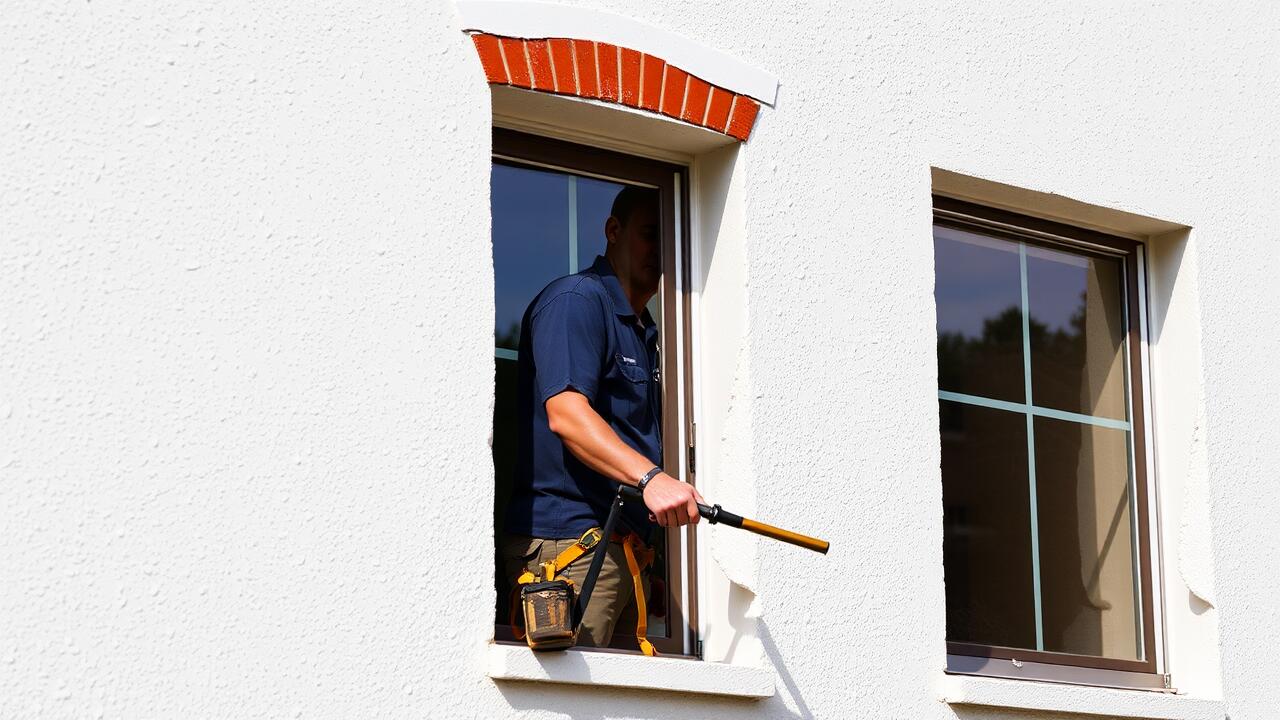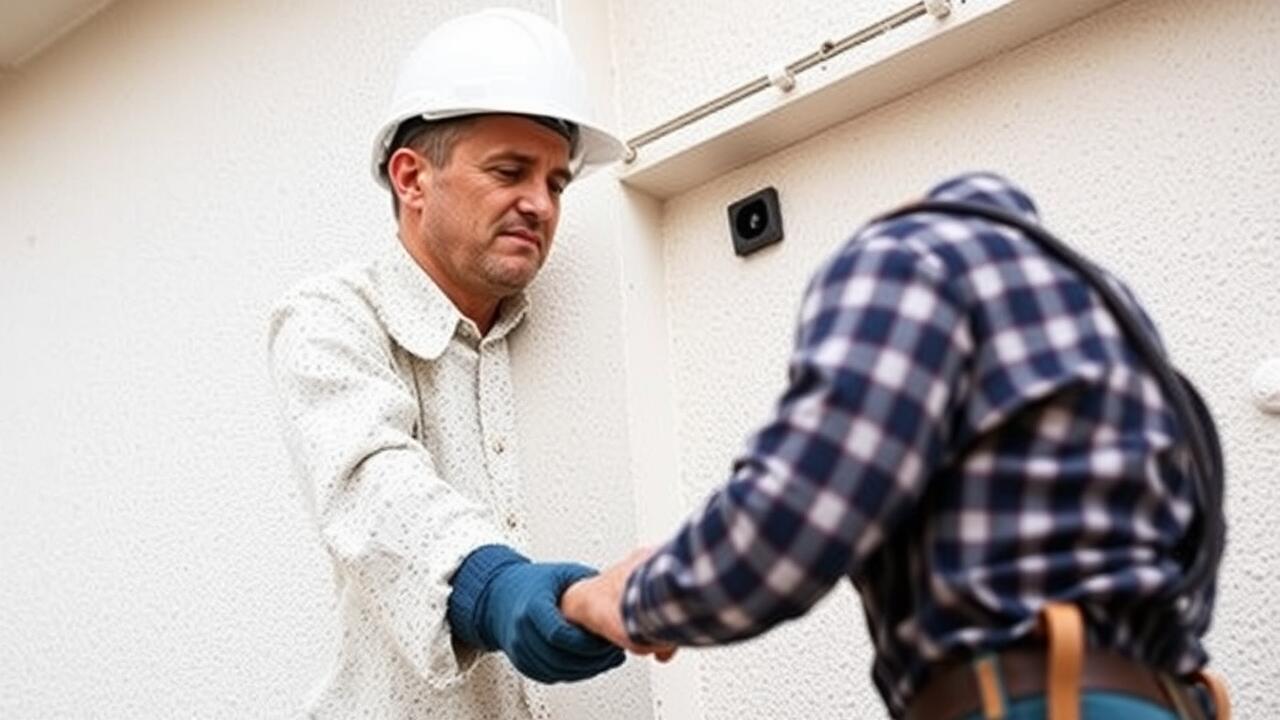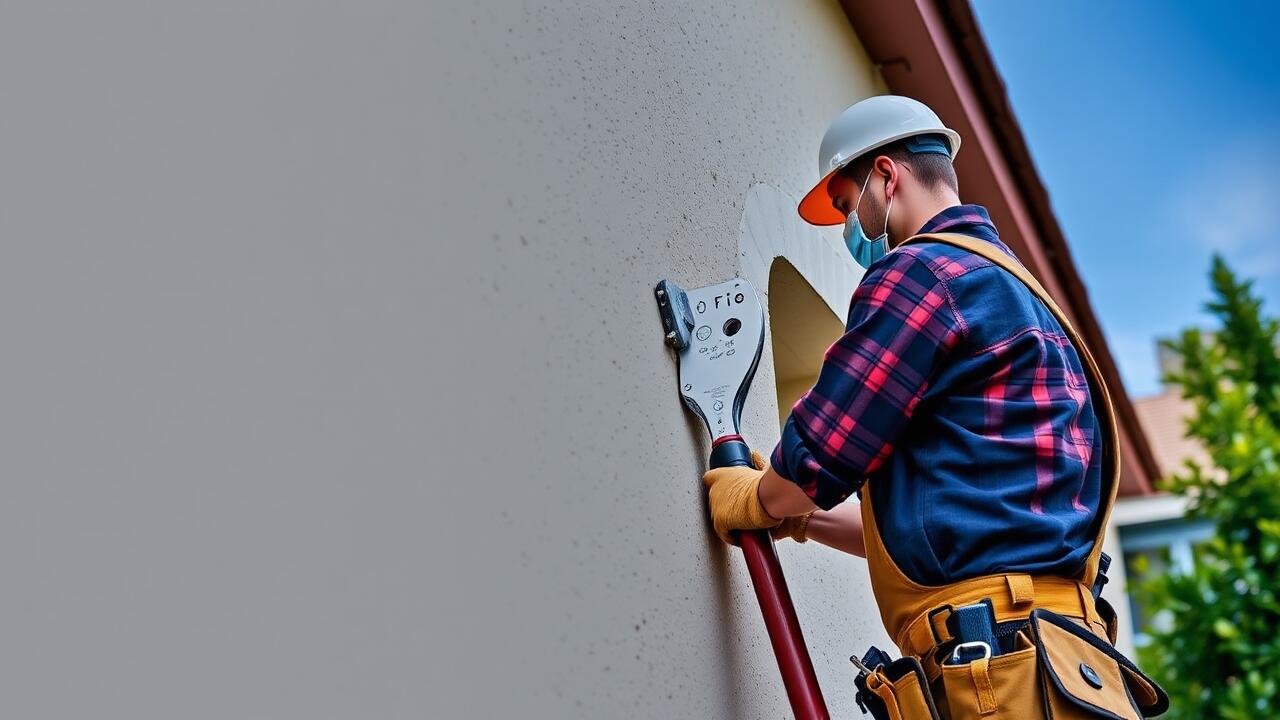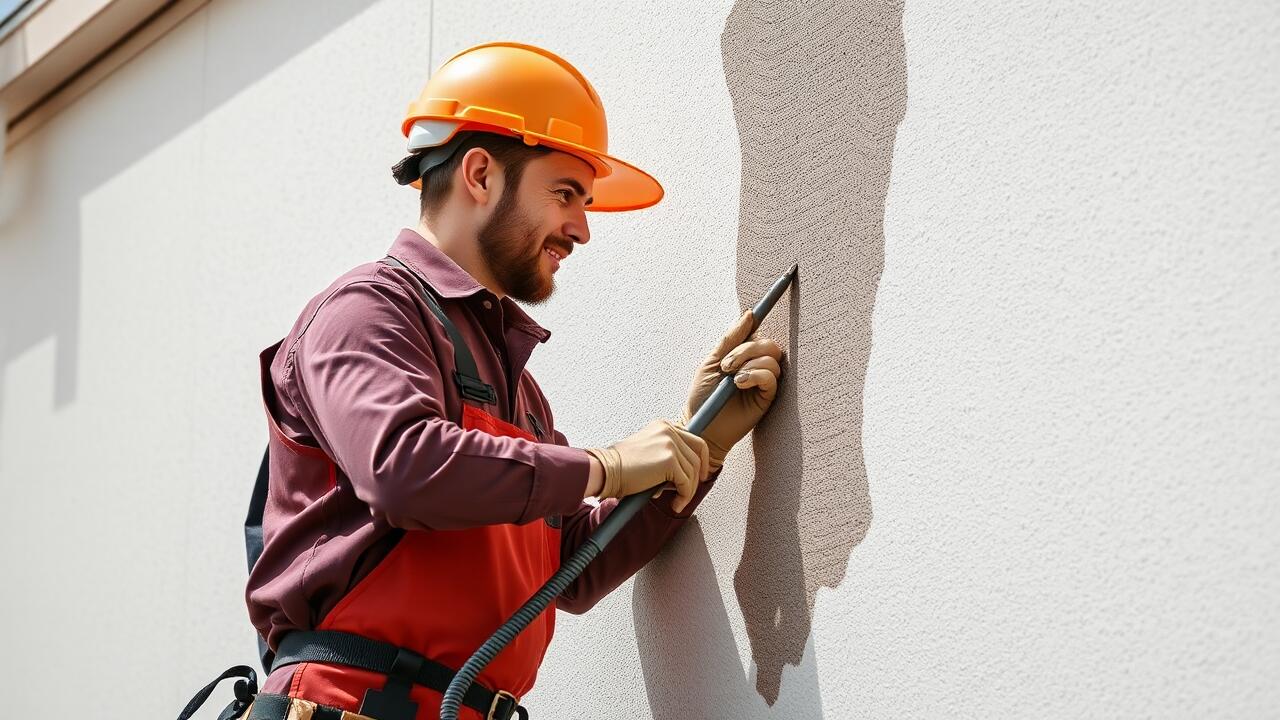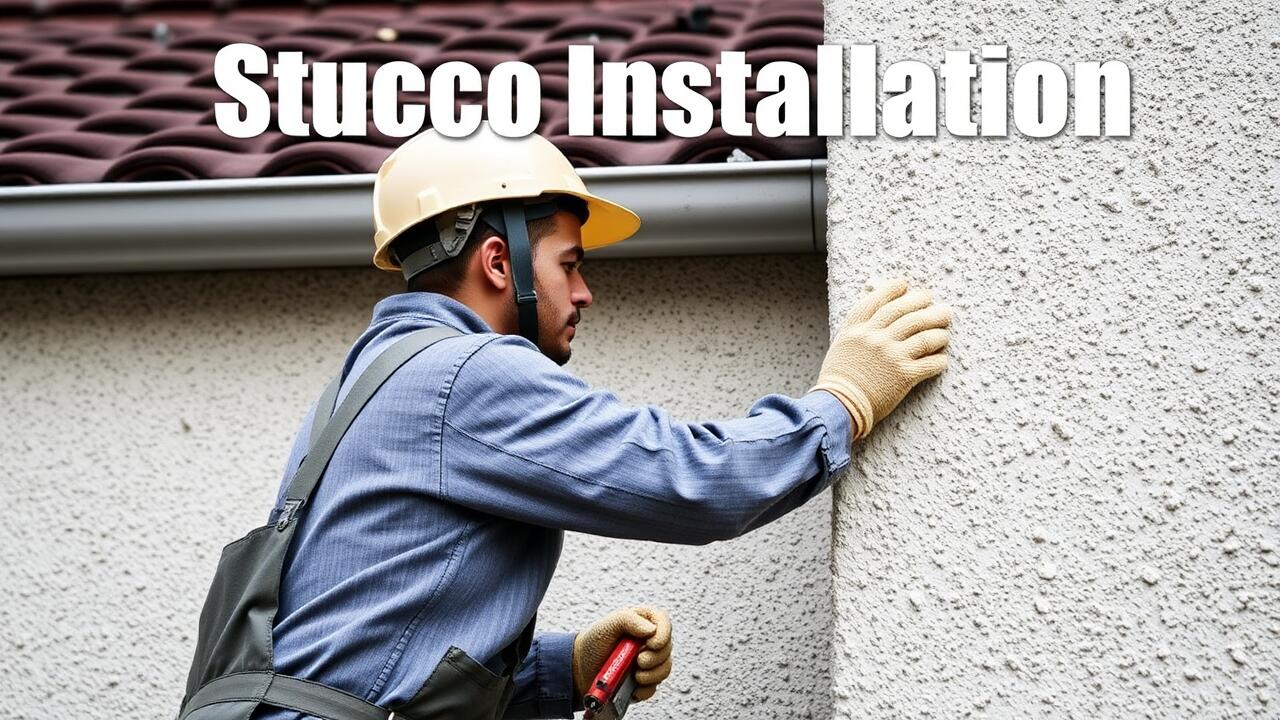
Signs of Stucco Deterioration
Stucco can show various signs of deterioration over time. Cracking is one of the most common indicators, and it often occurs due to shifting soil or improper installation. If these cracks are not addressed promptly, they can lead to water infiltration, which compromises the integrity of the material. Peeling paint or discoloration may also signal underlying issues. These cosmetic changes can suggest that the stucco is absorbing excess moisture.
In areas like Mid-Wilshire, Los Angeles, the climate can influence the longevity of stucco. Frequent temperature fluctuations can lead to expansion and contraction, resulting in surface defects. Additionally, if you notice mold growth or efflorescence on the stucco surface, these are signs of moisture retention. Proper maintenance and timely repairs can significantly extend the life of stucco, preventing the need for costly replacements. Being vigilant about these signs helps in maintaining both aesthetic appeal and structural health.
Identifying Common Issues Early
Regular inspections of your stucco exterior can help catch signs of deterioration early. Look for cracks, chips, or discoloration on the surface, as these can indicate underlying moisture issues or structural problems. Pay attention to areas where stucco connects with other materials, like windows and doors, as these seams can be common points of water infiltration. This proactive approach can prevent more costly repairs down the line, especially in regions with heavy rains.
If you're considering recent stucco installation in Mar Vista, Los Angeles, ensure that any potential problems are addressed promptly. Inspect the area for signs of bulging or separation from the structure. Small issues, like hairline cracks, might seem minor but can signal bigger concerns if left unattended. Addressing these issues early on helps maintain the integrity and aesthetics of your home, ensuring that the stucco remains both functional and visually appealing.
Repairing vs. Replacing Stucco
When faced with stucco deterioration, property owners often grapple with the decision to repair or replace their existing stucco. Factors influencing this choice include the extent of the damage, the age of the stucco, and overall structural integrity. Minor cracks and surface issues can often be remedied with repairs, which tend to be less costly and time-consuming. In cases where the stucco has extensive damage, moisture intrusion, or has reached the end of its lifespan, replacement becomes a more practical solution.
Choosing between repair and replacement can also depend on aesthetic considerations and long-term functionality. If the property has undergone significant wear and tear, a fresh stucco application may enhance its curb appeal and energy efficiency. This is particularly evident in regions like Silver Lake Heights, Los Angeles, where well-maintained exteriors are essential. Engaging professionals for proper assessment and ensuring quality stucco installation can lead to a more informed decision, potentially saving homeowners from costly repairs down the line.
When to Consider Each Option
When evaluating whether to repair or replace stucco, the extent of the damage plays a crucial role. Small cracks or surface issues may only require repair to restore the integrity of the exterior. If mold, extensive cracking, or structural damage is present, replacement becomes more practical. Homeowners should assess the overall condition of their stucco and consider the potential costs of ongoing repairs versus a full replacement.
Additionally, factors such as the age of the stucco and the installation's original quality can influence the decision. For instance, if the stucco is relatively new and has minor issues, repairs might suffice. Conversely, if the stucco installation in Tarzana, Los Angeles, involves older materials or poor craftsmanship, replacement may be the more economical choice. Ultimately, the decision hinges on a thorough analysis of the situation and long-term expectations for maintenance and durability.
Energy Efficiency and Stucco
Stucco serves as an effective exterior finish that can enhance energy efficiency for homes in Canada. When correctly applied, stucco can provide a robust barrier against harsh weather conditions while helping to regulate indoor temperatures. The material has inherent insulating properties that can reduce heating and cooling costs, making it an attractive option for homeowners looking to conserve energy.
Proper insulation behind stucco plays a crucial role in maximizing its energy efficiency benefits. A well-executed stucco installation in Mar Vista, Los Angeles, integrates quality insulation materials that work in conjunction with the stucco itself. This combination helps minimize energy loss and enhances overall home comfort. Homeowners should prioritize quality installation and maintenance to fully realize these energy efficiency advantages over the long term.
Benefits of Proper Insulation
Proper insulation plays a crucial role in enhancing the energy efficiency of homes with stucco exteriors. Insulating stucco not only contributes to maintaining a comfortable indoor temperature but also minimizes energy consumption. When coupled with stucco installation in Downtown Los Angeles, Los Angeles, a well-insulated structure can effectively reduce heating and cooling costs. This energy-efficient approach can lead to substantial savings over time, making it an attractive option for homeowners.
In addition to financial benefits, adequate insulation can also improve indoor air quality. It helps to prevent moisture buildup, reducing the risk of mold and mildew growth. This is especially important in regions susceptible to humidity. For homeowners investing in stucco installation in Downtown Los Angeles, Los Angeles, focusing on insulation during the construction or renovation process can enhance both the longevity of the exterior and the overall comfort of the home.
FAQS
How long can I expect stucco to last in Canada?
Stucco can last anywhere from 30 to 50 years in Canada, depending on factors like climate, maintenance, and installation quality.
What are some signs of stucco deterioration I should look for?
Common signs include cracks, discoloration, mold growth, and water stains. These signals may indicate that your stucco needs repair or replacement.
Is it better to repair or replace stucco?
Whether to repair or replace stucco depends on the extent of the damage. Minor issues can often be repaired, while extensive deterioration may require a full replacement.
How does energy efficiency relate to stucco?
Properly insulated stucco can improve energy efficiency by keeping homes warmer in winter and cooler in summer, potentially lowering energy bills.
When is it time to consider replacing my stucco?
You should consider replacement if there are extensive cracks, ongoing moisture issues, or if the stucco is more than 30 years old and showing significant wear.
